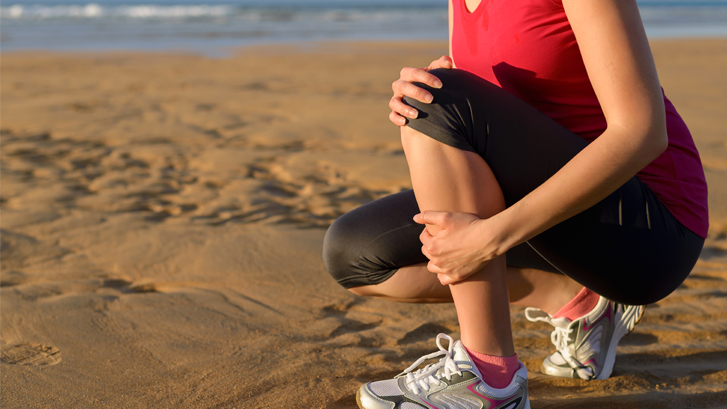What’s a Shin Splint?
Have you ever heard of ‘shin splints’?
If you haven’t, that’s okay; the term shin splint generally refers to a catch-all term for lower leg pain. The pain can occur below the knee, or the inside of the leg. Athletes, runners, tennis players, dancers and avid hikers usually experience this type of pain.
Shin splints, or Medial Tibial Stress Syndrome, can be summed up as “doing too much, too soon”.
So, what exactly is a shin splint?
Well, there is no simple clear-cut answer. However, there are theories that elude that small tears occur in the muscle that is pulled off of the bone. Another theory is that inflammation occurs in the periosteum (a thin sheath tissue that wraps around the tibia) as well as in the muscle.
Why do shin splints occur?
The pain can occur when you abruptly change your workout regimen. For instance, a runner can be plagued by this experience if he or she does not build mileage gradually, or by switching the running platform from flat to hills.
Nevertheless, a shin splint can be caused by a number of factors:
- Over pronation – occurs when the foot rolls inward and the arch of the foot flattens (i.e. having a flat foot).
- Inadequate stretching
- Irritated and swollen muscles (overuse)
- Wearing worn out shoes
- Excessive stress placed on one leg or foot from running
- Poor lumbar spine function
However, it is important to know that shin pain does not always indicate a shin splint and it is important to see your physician as it can be a sign of another condition. For instance, pain on the anterior part of the lower leg can be a compartment syndrome or a stress fracture.
Compartment syndrome: Swelling of the muscles within a closed compartment of the leg or calf.
Stress fracture: An injury in which the bone obtains a small, incomplete crack.
Nevertheless, it is treatable!
In most cases, a shin splint will heal on its own. However, it is important to see a doctor for a thorough physical exam. Note that for a serious shin splint, a doctor might ask to examine you while you run, and x-rays may be ordered.
At-home measures for treating a shin splint:
- Shin splints may be iced to alleviate pain and ease swelling. It is recommended for ice to be applied for 20-30 minute increments every 3 to 4 hours, for up to 3 days or until the pain subsides.
- Anti-inflammatory pain medications, nonsteroidal anti-inflammatory drugs (such as ibuprofen, naproxen, or aspirin) will help with the pain and swelling. Please note that these drugs do have potential side effects and should be taken as directed by the doctor and/or pharmacist.
- Orthotic shoes – commercially available shoe inserts or custom-made shoe inserts may help with arches that collapse or flatten when you stand up.
- Physical therapy/range of motion exercises – physical therapists can identify issues in your back or legs or running mechanics that may be causing the shin splint. Thus, they can recommend special exercises that stabilize your feet or stretches that can increase your range of motion.
- Neoprene sleeve – adds support and warmth on your lower leg.
Looking for tips on how to prevent shin splints?
Shin splints can be painful and uncomfortable, which is why you may want to follow these simple steps to try and prevent shin splints:
- Wear shoes with good support and padding that fit your foot type.
- Warm up before working out.
- Maintain proper mobility in your ankles and hips.
- Stretch the muscles in your legs, especially after workouts.
- Improve strength in the stabilizing muscles of your core, hips, and ankles.
- Stop working out as soon as you feel pain in your shins.
If you are experiencing pain in your shin, it is crucial that you see a physician to have your leg examined.
Medically Reviewed by Dr. Roman Shulze
If you have questions about constant lower leg pain or believe you might have a shin splint, Healthpointe can help! If you have questions, give us a call at 888-719-8448. At Healthpointe, we are passionate about health, mindfulness, prevention, and helping you live your healthiest life, walk-in to any of the Healthpointe medical offices, such as the Colton Office by Rialto, Bloomington, San Bernardino, Loma Linda, Highgrove, and Grand Terrace.

